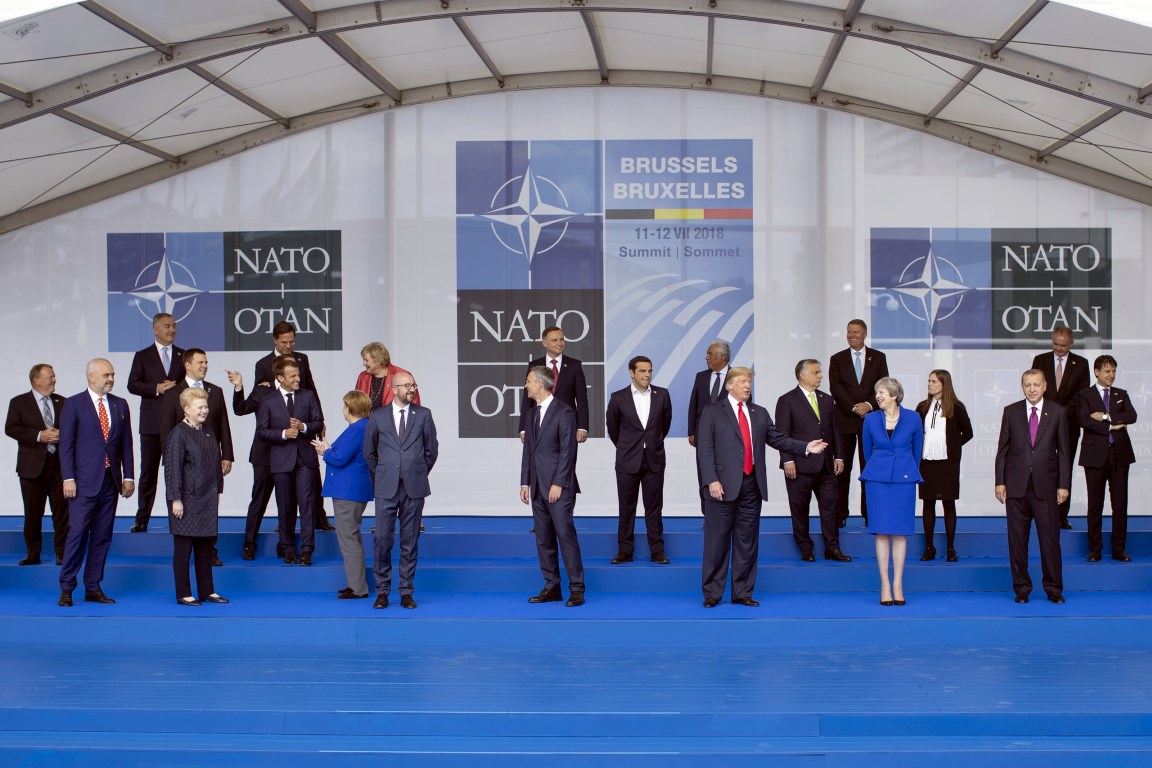Trump in Europe
July 13, 2018 | Expert Insights

President Trump signed a NATO deal but cornered Germany about Russian pipeline and urged members to double defense spending goals.
Background
The North Atlantic Treaty Organization was created in 1949 by the United States, Canada, and several Western European nations to provide collective security against the Soviet Union. In 1952, Greece and Turkey signed up. West Germany joined NATO in 1955 and the Soviet Union along with its eastern European states formed the Warsaw Pact. NATO developed the doctrine of “massive retaliation”, a nuclear response to Soviet attack. President Kennedy developed the “flexible response” policy emphasising conventional forces to deter Soviet aggression.
The common pool of member nations between NATO and the EU makes close cooperation between them an important element in developing a comprehensive approach to crisis management.
In Trump’s first year in office, US foreign policy has been unpredictable. US allies in Europe are finding it increasingly difficult to steer through Trump’s policies while their own priorities are undermined. German Foreign Minister Heiko Maas warned in a recent speech that “old pillars of reliability are crumbling,” in a veiled reference to the U.S. withdrawal from the 2015 Iran nuclear deal and the tariffs on EU metals exports.
Analysis
The Brussels NATO Summit is shaping up to be the most divisive in NATO’s 69-year history. Usually, NATO summits are fixed in advance and proceed in an orderly fashion. Defying tradition, this meeting seemed to take a different route with Trump’s first words.
Only hours after arriving at NATO headquarters, Trump singled out Germany for criticism. He complained about the Nord Stream 2 pipeline, a Russian-owned project that Germany uses to buy gas from Moscow.
Chancellor Merkel pushed back against Trump’s tirade saying,“I have experienced myself how a part of Germany was controlled by the Soviet Union. I am very happy that today we are united in freedom, the Federal Republic of Germany. Because of that we can say that we can make our independent policies and make independent decisions. That is very good, especially for people in eastern Germany.”
NATO members agreed in 2014 to spend at least 2% of GDP on their militaries by 2024. Mr. Trump has repeatedly castigated other countries for spending less, even though the deadline is six years away, but the declaration reaffirmed commitment to that target. “During the president’s remarks today at the NATO summit, he suggested that countries not only meet their commitment of 2% of their G.D.P. on defense spending, but that they increase it to 4%,” the White House press secretary, Sarah Huckabee Sanders, said in a statement.
Along with 28 other heads of state, Mr. Trump signed the 23-page NATO declaration, which reflects months of negotiation. That contrasts with Mr. Trump’s departure last month from the G7 summit meeting, when he refused to sign the usual carefully crafted communiqué. The 79-point joint statement also censured Russia’s actions in Ukraine in the bluntest terms: “We strongly condemn Russia’s illegal and illegitimate annexation of Crimea, which we do not and will not recognize.”
However, just over a week ago, President Trump told reporters on Air Force One that he was considering supporting Russia’s claim to Crimea, which it seized in 2014. Trump often appears to be doing Russian President Putin's work for him, by opening divisions in the transatlantic alliance and berating NATO partners. However, the consequences of this unconventional summit will add up only after the Helsinki Summit where Trump and Putin are expected to have a one-on-one meeting.
On the second day of the NATO summit, members held an unscheduled emergency meeting to discuss the alliance’s defense budget. French President Macron said, “Everyone agreed to raise spending as they agreed in 2014, and everyone agreed to respect the commitments they made. We reaffirmed a credible budget strategy that meets our needs.” When asked about pulling out of the NATO without Congress approval, Trump said,“ I think I probably can.”
Counterpoint
“It makes me think that the fundamental purpose of NATO either isn't understood or is being pushed aside," David Priess, a former CIA officer said. "The first NATO secretary-general famously said that the purpose of NATO was to ‘keep the Soviet Union out, the Americans in and the Germans down’." "The President seems to have corrupted that to ’build the Russians up, get the Americans out and put the Germans down’ “Priess added.
Assessment
Our assessment is that Trump’s perceptible disdain with the current state of NATO is worrisome for the member nations. Since President Trump has the power to take decisions regarding Russia, NATO members must tread the path of defence expenditures carefully. We also believe that by firing his first salvo against Germany he has made his discomfort with Merkel obvious.








Comments